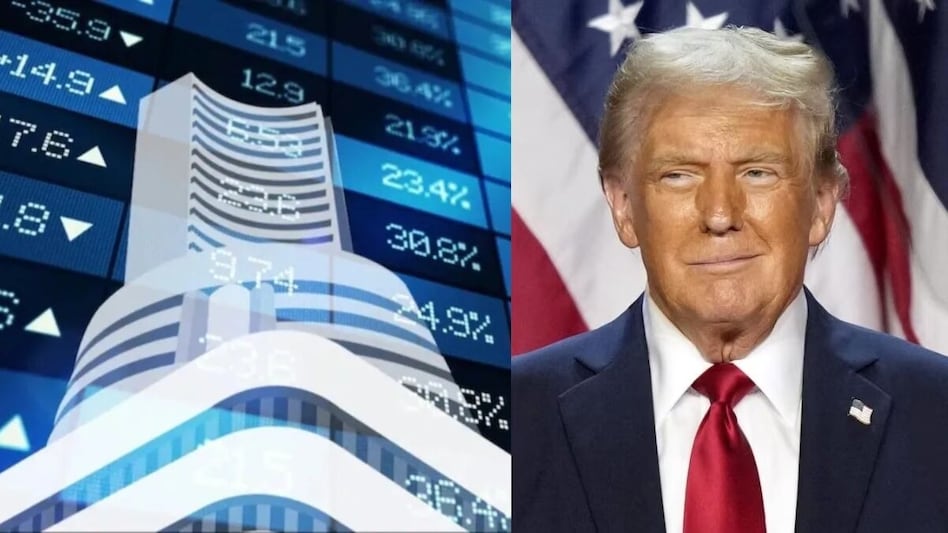 Thanks to FPI buying in the second half, FPI outflows to India reduced to Rs 3,973 crore in March against Rs 34,574 crore in February and Rs 78,027 crore in January.
Thanks to FPI buying in the second half, FPI outflows to India reduced to Rs 3,973 crore in March against Rs 34,574 crore in February and Rs 78,027 crore in January.  Thanks to FPI buying in the second half, FPI outflows to India reduced to Rs 3,973 crore in March against Rs 34,574 crore in February and Rs 78,027 crore in January.
Thanks to FPI buying in the second half, FPI outflows to India reduced to Rs 3,973 crore in March against Rs 34,574 crore in February and Rs 78,027 crore in January. With 'Liberation Day' coming, all eyes are on tariffs the Trump administration would impose on India. Stock analysts noted that the recent market correction was driven by the confluence of three factors: Weak Indian economic data, poor corporate earnings and FIIs finding more palatable valuations in China and attractive opportunities in the US. Now with fresh fears over tariffs looming, will the domestic stock market see another round of selloff?
"A key near-term worry is Trump’s likely announcements on April 2, 2025, which, if too harsh on India, can cause another round of correction in the India market," said JM Financial in a strategy note.
Ahead of reciprocal tariffs, the US benchmark Dow Jones Industrial Average slumped 715.80 points, or 1.69 per cent, to close at 41,583.90 on Friday. S&P500 index stood at 5,580.94, down 112.37 points or 1.97 per cent.
Nomura noted that the Trump administration’s proposed reciprocal tariffs mean different things to different people. The most narrow, and least significant, interpretation assumes a simple matching of other countries’ tariffs currently imposed on the US.
"If India’s tariff on imports from the US is 9.5 per cent, and US’s tariff on imports from India is 3 per cent, then the reciprocal tariff would be 6.5 per cent. We apply this narrow interpretation to our analysis, and see that India, Thailand and Brazil are among the five most exposed," Nomura said.
That said, the brokerage suspects the criteria for US reciprocal tariffs will be much broader than that, and indeed more difficult to quantify.
"The investigations by the United States Trade Representative, the Secretary of Commerce and Treasury Department that are due to be completed by April 1 cover many other areas, including but not limited to: the size of US trade deficits with other countries, de minimis exports, VAT rates, digital taxes, circumvention of US tariffs through third countries, currency manipulation, state subsidies and various other non-tariff trade barriers. Tariffs could even be imposed for geopolitical means (think Venezuela)," Nomura said.
VK Vijayakumar, Chief Investment Strategist, Geojit Investments said the trend in FPI flows will depend mainly on Trump’s reciprocal tariffs expected on April 2. If the tariffs are not severe, the rally may continue, he said.
Thanks to FPI buying in the second half, FPI outflows to India reduced to Rs 3,973 crore in March against Rs 34,574 crore in February and Rs 78,027 crore in January.
"There is massive uncertainty on the targets, size and scope of the tariffs expected on 2 April. Good luck navigating the fog of tariffs," Nomura said.
Auto tariffs
The US has announced import duty of 25 per cent on all imported cars and auto component. The tariffs would come into play on April 2. CLSA said Tata Motors, Bharat Forge Samvardhana Motherson (SAMIL) and Sona BLW in its coverage have exports linked to the US, either made in India or elsewhere.
Unlike others, SAMIL has manufacturing facilities in the US including a larger one in Alabama, which could cater to demand from the US car manufacturers and therefore would see relatively lower impact.
The foreign brokerage noted that close to 31 per cent of JLR's retail sales come from the US and that models are made in the UK. Tata Motors is, thus, exposed to the higher duty. It noted that the US in the past has been a relatively lower-margin market for JLR.
Stock market valuations
JM Financial noted that since September 2024, Nifty has corrected 11 per cent from its top and valuations have come off from the peak of 23 times to 18.6 times 1-year forward (closer to the 25-year mean of 17.2 times).
"We believe that the mean reversion story has broadly panned out, leaving limited room for a downside hereon. Bank Nifty valuations appear extremely attractive at